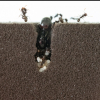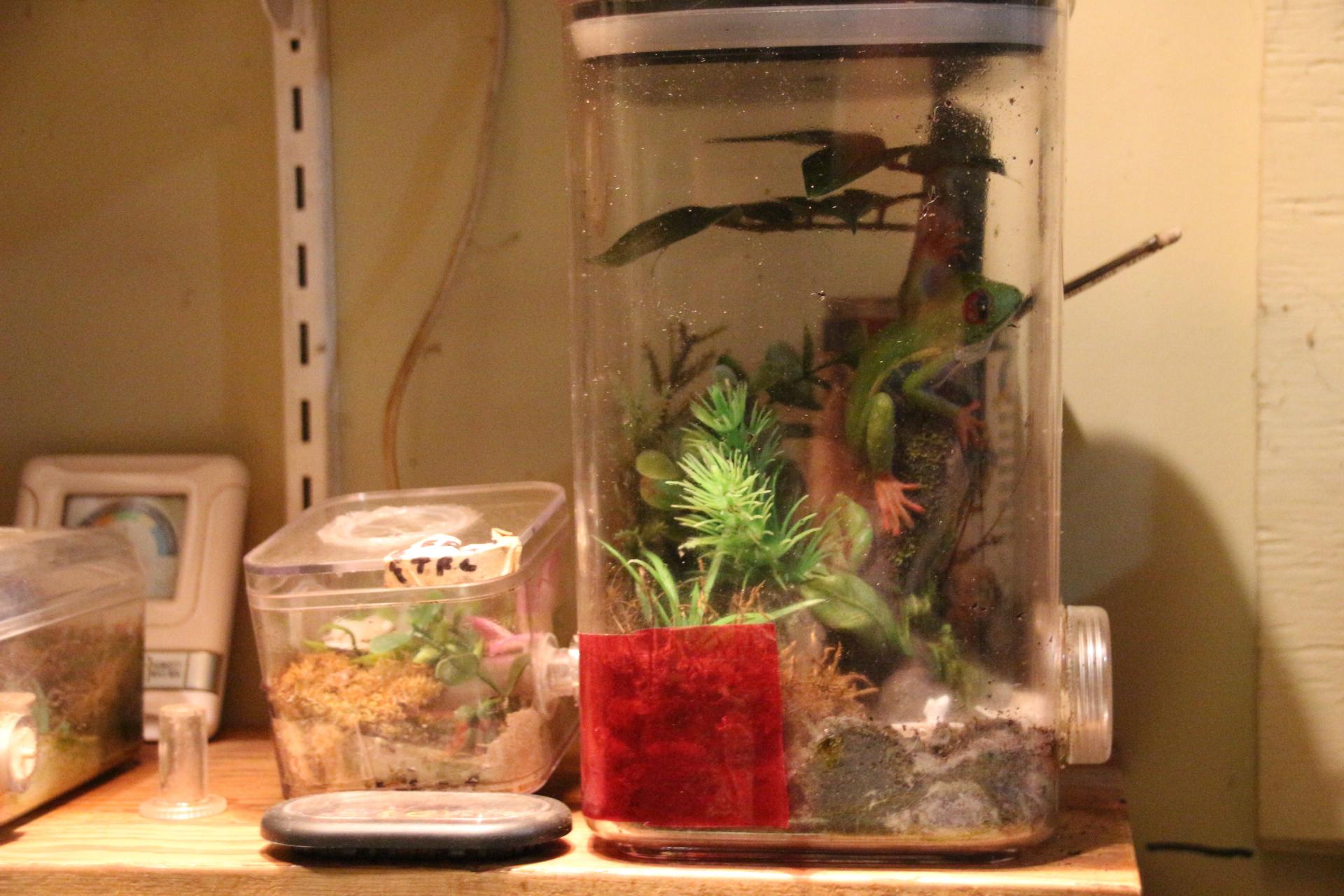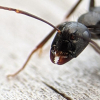- Formiculture.com
- Forums
- Gallery
- Members
- Member Map
- Chat

breeding/mating in captivity
Started By
mete
, Sep 21 2024 10:41 AM
16 replies to this topic
#1
 Offline
-
Posted September 21 2024 - 10:41 AM
Offline
-
Posted September 21 2024 - 10:41 AM
Are the ant colonies sold in the shops captured in wild or "made" in captivity ? Is it possible to breed ants in captivity ?
#2
 Offline
-
Posted September 21 2024 - 10:45 AM
Offline
-
Posted September 21 2024 - 10:45 AM
Yes it is possible.
- Barristan and mete like this
Go to the ant, you sluggard; consider its ways and be wise! It has no commander, no overseer or ruler, yet it stores its provisions in summer and gathers its food at harvest. -Proverbs 6: 6-8
My Nationwide Ant Shop Here I have PPQ-526 permits to ship Lasius nationwide!
Attention Ant-Keepers in South Dakota! Join the SoDak(Society Of Dakotan Ant Keepers)
#4
 Offline
-
Posted September 21 2024 - 3:49 PM
Offline
-
Posted September 21 2024 - 3:49 PM
Are the ant colonies sold in the shops captured in wild or "made" in captivity ? Is it possible to breed ants in captivity ?
Almost all are captured in the wild. A few exceptions are species like Tetramorium bicarinatum, Pheidole megacephala and other species known for inbreeding.
- mete likes this
#5
 Offline
-
Posted September 21 2024 - 6:35 PM
Offline
-
Posted September 21 2024 - 6:35 PM
Yes, and many of those including T. bicarinatum breed in the nest as opposed to other captive breeding methods, so in order to sell them they would need to encourage colonies to bud off into new test tubes, assuming you have a years old colony capable of producing alates, which could be a lot more of a hassle than just sticking a queen in a test tube and letting her do the rest.
Edited by RushmoreAnts, September 21 2024 - 6:36 PM.
- mete likes this
"God made..... all the creatures that move along the ground according to their kinds (including ants). And God saw that it was good. Genesis 1:25 NIV version
Formerly called AntsDakota, not to be confused with Ants_Dakota (hence the name change). You can still call me Adak.
Keeping:
Formica cf. pallidefulva, cf. incerta, cf. subsericea, unidentified fusca group sp.
Formica cf. ravida, cf. obscuriventris
Myrmica sp.
#6
 Offline
-
Posted September 21 2024 - 9:28 PM
Offline
-
Posted September 21 2024 - 9:28 PM
Hello mete;
I keep two kinds of ants that have multiple queens, Myrmica americana and Tapinoma sessile. I've observed that each individual queen will have her own area where she lays and tends her eggs and small larvae. This area could be a corner of a chamber or an area outside of the main nest. I provide them with small bottles or tubes for this purpose when I build the formicarium. In the setup below you can see two small bottles covered by the red filter, look closely and you can see the eggs in the front one. Usually only one queen occupies each small bottle, it's interesting to see how many eggs one queen can lay.
I've also attached small "founding cubes" onto a larger setup, like the cube attached above on the left side. Queens move into them for the season and lay eggs; once the eggs have hatched, they're taken to a communal larvae area where they're reared with all the others. For diapause these queens and workers have always returned to the main nest if I leave them connected. I've also detached the founding cube from the main nest during the season and the queens and workers have started a new colony, like the budding previously mentioned.
I strongly suspect that mating takes place within the nest for both these types of ants, although I don't know that for sure. They've had mating flights; but they also appear to get rid of old queens and replace them with new queens. My Myrmica ants, in particular, seem to do a cull of old queens and workers in spring and fall. I'd be interested to hear if someone knows for sure about this type of thing.
RPT
- mete likes this
My father always said I had ants in my pants.
#7
 Offline
-
Posted September 22 2024 - 12:39 AM
Offline
-
Posted September 22 2024 - 12:39 AM
A follow up question. Are the colonies sold with some workers (lets say up to 20 or so) always in their first year or can it be their second or even later years ?
#8
 Offline
-
Posted September 22 2024 - 1:24 AM
Offline
-
Posted September 22 2024 - 1:24 AM
A follow up question. Are the colonies sold with some workers (lets say up to 20 or so) always in their first year or can it be their second or even later years ?
That depends on the species. If a species has nuptial flights late in the year, they won't found in the same year but after hibernation, so they'd be in second year with 20 workers. It also depends on how early you buy your colony. If you buy it shortly after hibernation ended the colony might still have only around 20 workers. Then there could also be the case that something happened to the colony so it lost a lot of workers. So theoretically a colony with 20 workers could be 5 years and only has so few because it lost the rest.
Ask the shop they should know when the queens had their nuptial flight.
If you want a good quality indicator you have to look at the brood. Almost all ant species hibernate with brood (larvae), so a colony with 20 workers should always have some brood. If you bought a colony with 20 workers but no brood, something must have happened to the brood. Exception are Formica spp. they don't hibernation with any brood, so it is normal to have 0 brood during and shortly after hibernation.
Edited by Barristan, September 22 2024 - 1:26 AM.
- RushmoreAnts, rptraut and mete like this
#9
 Offline
-
Posted September 22 2024 - 1:29 PM
Offline
-
Posted September 22 2024 - 1:29 PM
I can confirm, winter begins early here, and my Formica already stopped laying eggs. In this first season my three colonies in the fusca and pallidefulva groups will end up with 8, 11, and 20 workers by hibernation, respectively.
"God made..... all the creatures that move along the ground according to their kinds (including ants). And God saw that it was good. Genesis 1:25 NIV version
Formerly called AntsDakota, not to be confused with Ants_Dakota (hence the name change). You can still call me Adak.
Keeping:
Formica cf. pallidefulva, cf. incerta, cf. subsericea, unidentified fusca group sp.
Formica cf. ravida, cf. obscuriventris
Myrmica sp.
#10
 Offline
-
Posted September 22 2024 - 3:37 PM
Offline
-
Posted September 22 2024 - 3:37 PM
Staged nuptial flights have been done before. If I remember correctly, in this study, Leptothorax queens and drones milling around in an outworld were moved to holding containers and seen mating after raising the temperature/humidity.
I once read a study on Pogonomyrmex flights that mentioned a lab-based nuptial flight: 2/10 queens raised from pupae flew with drones from a previous wild flight given a holding bucket with twigs, a nearby fan blowing 16 km/h, temperature of 34 C, and the relative humidity 52% (saturation deficit of 19.2 mm Hg). Two 100-watt bulbs were 2 meters above the bucket, along with a west facing window. The two queens flew with the drones to window, mated, and proceeded to dig into substrate.
- RushmoreAnts and rptraut like this
Leave the Road, take the Trails - Pythagoras
Utah Ant Keeping --- Here
DIY Formicariums and Outworlds --- Here
Honeypot Ant Journal --- Here
Photo Album --- Here
Videos --- Here
#11
 Offline
-
Posted September 22 2024 - 4:26 PM
Offline
-
Posted September 22 2024 - 4:26 PM
I wonder if it has something to do with how the queens mate: in the air or on the ground. I would assume species which mate on the ground would be easier to stage than those who mate many feet in the air.
- rptraut and cooIboyJ like this
"God made..... all the creatures that move along the ground according to their kinds (including ants). And God saw that it was good. Genesis 1:25 NIV version
Formerly called AntsDakota, not to be confused with Ants_Dakota (hence the name change). You can still call me Adak.
Keeping:
Formica cf. pallidefulva, cf. incerta, cf. subsericea, unidentified fusca group sp.
Formica cf. ravida, cf. obscuriventris
Myrmica sp.
#12
 Offline
-
Posted September 23 2024 - 8:12 AM
Offline
-
Posted September 23 2024 - 8:12 AM
Brachymyrmex patagonicus mate on the ground, and around a year ago I managed to successfully breed some. I had two test tubes, and I put an unmated queen found from tearing into one of their nests before nuptial flight season, and a male found in the same way. I had to tear into two different nests so the queens don't mate with their brothers. I put the male In the test tube with the queen and waited awhile. Eventually the male died and the queen started laying eggs not too long afterwards. I had to let her go, but I had a Brachymyrmex patagonicus colony in my backyard for a while. But they died because of the heat once summer came (this all happened in spring). I hope this helps!
- RushmoreAnts likes this
“You’ll survive” -wise man.
Currently keeping:
Brachymyrmex patagonicus
Solenopsis invicta
Crematogaster sp.
#13
 Offline
-
Posted September 23 2024 - 9:42 AM
Offline
-
Posted September 23 2024 - 9:42 AM
From my personal experience, most ground-mating species are possible to mate in captivity, and (as far as our ants are), most of the Aphaenogaster we sell are captive bred.
However, most of our ants are from wild collected queens (I imagine this is the case for most shops)
- RushmoreAnts and mete like this
Visit us at www.canada-ant-colony.com !
#14
 Offline
-
Posted September 23 2024 - 9:54 AM
Offline
-
Posted September 23 2024 - 9:54 AM
Do some species mate only in the air and some only on the ground ? or all species (except special cases like wingless virgin queens) mate in the air but some also can mate on the ground ?
#15
 Offline
-
Posted Yesterday, 3:10 PM
Offline
-
Posted Yesterday, 3:10 PM
i mated odontomachus desertorum, pheidole cerebrosior/spadonia and it was pretty easy. well the latter two were, desertorum took some time to actually mate.
myrmycinae in general seem to be alot easier with the exception of leafcutters which are light temp and humidity triggered.
- RushmoreAnts and eea like this
#16
 Offline
-
Posted Yesterday, 8:19 PM
Offline
-
Posted Yesterday, 8:19 PM
i mated odontomachus desertorum, pheidole cerebrosior/spadonia and it was pretty easy. well the latter two were, desertorum took some time to actually mate.
myrmycinae in general seem to be alot easier with the exception of leafcutters which are light temp and humidity triggered.
Leafcutters like Atta and Acromyrmex probably need to mate in the air while flying, so captive breeding for them would be almost impossible. That being said, you could work against the odds by building a 5,000 gallon terrarium or something lol.
- eea likes this
"Float like a butterfly sting like a bee, his eyes can't hit what the eyes can't see."
- Muhammad Ali
Check out my shop and parasitic Lasius journal! Discord user is bmb1bee if you'd like to chat.
Also check out my YouTube channel: @bmb1bee
#17
 Offline
-
Posted Yesterday, 9:44 PM
Offline
-
Posted Yesterday, 9:44 PM
i mated odontomachus desertorum, pheidole cerebrosior/spadonia and it was pretty easy. well the latter two were, desertorum took some time to actually mate.
myrmycinae in general seem to be alot easier with the exception of leafcutters which are light temp and humidity triggered.Leafcutters like Atta and Acromyrmex probably need to mate in the air while flying, so captive breeding for them would be almost impossible. That being said, you could work against the odds by building a 5,000 gallon terrarium or something lol.
they don't need to fly to mate. i collected hundreds of males and females and mated most of them inside my house. the actual mating condition itself requires the trigger, but once they're riled up they're easily mated.
they don't actually mate in the air, what happens is males hover in a swarm, and females locate them, then crash into a male, and they hit the ground, and a bunch of other males cluster all over. the actual mating is done on the ground.
the trigger IMO isn't even the actual rain but moreso how cool it is the rest of the night into the morning caused by evaporative cooling.
1 user(s) are reading this topic
0 members, 1 guests, 0 anonymous users






















